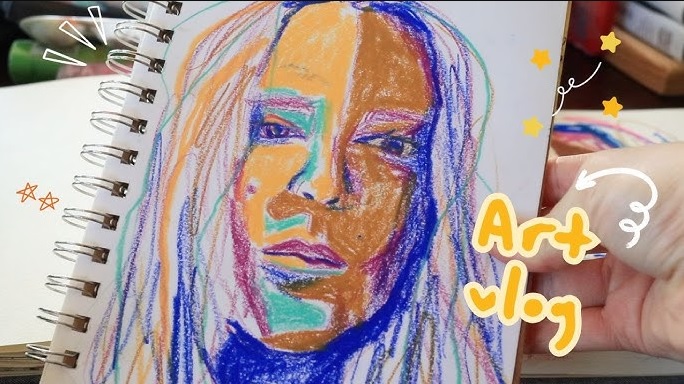Introduction
Storyboarding is a vital step in visual storytelling, providing a blueprint for films, animations, advertisements, and more. Ashley Ann Tahigan, a renowned storyboard artist, has developed a guide that emphasizes clarity, creativity, and effective communication. This article explores her approach, offering insights into her techniques and how they can enhance your storytelling process.
Understanding Storyboarding
A storyboard is a sequence of drawings that represent the shots planned for a film or television production. It serves as a visual script, outlining the narrative flow, camera angles, character movements, and transitions.
Importance of Storyboarding
-
Visualizing the Narrative: Helps in seeing the entire story, identifying potential issues before production.
-
Planning Scenes: Allows detailed planning of each scene, including action, dialogue, and visual elements.
-
Saving Time and Resources: By outlining the story beforehand, creators can avoid costly mistakes during filming.
Ashley Ann Tahigan’s Approach to Storyboarding
Ashley Ann Tahigan’s methodology focuses on creating storyboards that are not only visually appealing but also emotionally resonant and functionally effective.
1. Thumbnail Sketches
Starting with small, rough sketches to capture the essence of each scene without getting bogged down in details.
-
Focus on Composition: Helps in framing each scene effectively.
-
Quick Iterations: Allows for rapid exploration of ideas, enabling creators to adjust compositions easily.
2. Sequential Storyboarding
Organizing sketches in the order they will appear in the final project to visualize the overall flow of the story.
-
Pacing and Timing: Aids in determining the pacing and timing of the narrative.
-
Scene Transitions: Highlights how scenes will transition from one to another, ensuring a smooth narrative flow.
3. Incorporating Dialogue and Notes
Adding dialogue, sound effects, and notes to each panel to enrich the visual representation of the scenes.
-
Contextual Information: Helps the production team understand the mood and tone of each scene.
-
Clarity for Everyone: Ensures that everyone involved has a clear understanding of the creative vision.
4. Revising and Refining
Storyboarding is an iterative process. Ashley advocates for continuous revision and refinement based on feedback from collaborators and personal insights.
-
Flexibility: The storyboard should be adaptable to new ideas and changes in the narrative.
-
Collaboration: Regularly revisiting the storyboard encourages collaboration and input from the entire creative team.
Key Elements in Ashley Ann Tahigan’s Storyboard Technique
Ashley Ann Tahigan emphasizes several elements to enhance the effectiveness of storyboards:
Visual Composition
-
Rule of Thirds: Placing key elements along gridlines to draw the viewer’s attention.
-
Depth and Perspective: Creating a sense of depth with foreground, midground, and background elements.
-
Lighting and Mood: Using light and shadow to convey the tone of the scene.
Character Dynamics
-
Expressive Poses and Gestures: Conveying emotion through body language.
-
Relationship Dynamics: Highlighting interactions between characters through positioning and movement.
-
Consistency: Maintaining consistent character design across panels.
Flow of Action
-
Leading Lines and Directional Cues: Guiding the viewer’s eye through the panels.
-
Motion Lines or Blur Effects: Depicting movement effectively.
-
Avoiding Visual Clutter: Ensuring clarity by focusing on essential elements.
Emphasizing Emotional Beats
-
Pacing: Building up to key emotional moments with appropriate timing.
-
Close-ups: Highlighting emotional expressions.
-
Symbolic Imagery: Reinforcing the emotional tone through visual symbols.
Tools Recommended by Ashley Ann Tahigan
Ashley Ann Tahigan utilizes both traditional and digital tools in her storyboarding process:
| Tool Type | Examples | Benefits |
|---|---|---|
| Traditional | Sketchbooks, Pencils, Markers | Tactile experience, spontaneous creativity |
| Digital | Storyboard Pro, Toon Boom, Photoshop | Easy editing, layering, and sharing capabilities |
Common Mistakes to Avoid in Storyboarding
Even experienced storyboard artists can make errors. Ashley Ann Tahigan highlights common pitfalls:
-
Overloading Frames: Including too much information can confuse viewers.
-
Ignoring Transitions: Neglecting how scenes flow into each other disrupts narrative coherence.
-
Lack of Feedback: Avoiding critiques can lead to overlooked issues.
-
Inconsistent Character Placement: Misplaced characters can disrupt scene balance.
FAQs
Q1: What is the primary purpose of a storyboard?
A storyboard serves as a visual plan for a narrative, outlining scenes, actions, and transitions to guide production.
Q2: How does Ashley Ann Tahigan’s approach differ from traditional storyboarding?
Her approach emphasizes emotional storytelling, iterative refinement, and collaboration, ensuring each frame contributes meaningfully to the narrative.
Q3: Can beginners apply Ashley Ann Tahigan’s techniques?
Yes, her methods are accessible to all skill levels, focusing on clarity,




